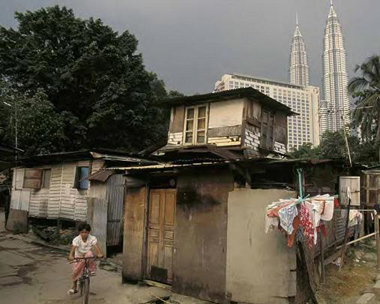

Ensuring that gains in health and wellbeing reach the world’s poorest

How can we ensure that the world’s poorest and most marginalized citizens are included in the global march toward better health, education and living standards? Development experts are exploring this question at a high-level meeting in London this week to find new strategies for tackling rising social inequality worldwide.
Convened by the MDG Achievement Fund (MDG-F) and the Institute of Development Studies (IDS, Sussex), the roundtable’s goal is to identify concrete policies and actions that will place equity and social justice at the centre of national and international policies and priorities.
“The encouraging rates of national progress we are seeing in reducing poverty and increasing well-being mask the reality that the most disadvantaged among us are being left behind,” said MDG-F Director Sophie de Caen. “The only way to sustain the advances we have made toward the Millennium Development Goals is to ensure that our efforts are focused on equity, to make sure that everyone, even the most deprived, are sharing equally in development gains.”
The meeting springs from the findings of a joint MDG-F/IDS, Sussex publication entitled "Can the MDGs provide a pathway to social justice: the challenge of intersecting inequalities”, whose release coincided with the September 2010 United Nations review of progress toward the Millennium Development Goals (MDGs).
The report found that in South/Southeast Asia, Sub-Saharan Africa and Latin America, people are being systematically left out or left behind, often on the mere basis of their race, ethnicity, religion, gender or geographical location.
For example, the Asia-Pacific region as a whole is on track to achieve the MDG target of halving those living in extreme poverty by the year 2015, primarily due to the extraordinary performance of China. However, China’s ethnic minorities, who are largely concentrated in the west of the country, remain at a clear disadvantage; they comprise 8.4 per cent of the population, but accounted for 46 per cent of people living in extreme poverty in 2003. In Vietnam, 45 percent of ethnic minorities have not completed any level of education as compared to 22 percent for the dominant Kinh/Chinese.
Sub-Saharan Africa has the highest levels of child mortality in the world, and while the region has shown improvement in the last decade, ethnic inequalities in the rates of child deaths have spread. In Niger, for example, the mortality rate around 1990 for underfives was 242 deaths per 1,000 among the Djerma people in the westernmost part of the country, compared to 353 per 1,000 elsewhere.
Historically, Latin America has been one of the most unequal regions of the world. In Ecuador in 2003, the national maternal mortality rate was 74.3 per 100,000 live births, whereas it was 250 per 100,000 among remote indigenous communities.
The London meeting will set out strategies to address these cultural, political, economic and geographical inequalities, such as:
“When injustices based on people’s cultural, political, economic and geographical differences combine, they can be very hard to tackle,” said Ms.de Caen. “But we will only succeed in addressing the root causes of instability and insecurity when we change the policies and thinking that allow these inequalities to exist.”
Click here to read the full report.